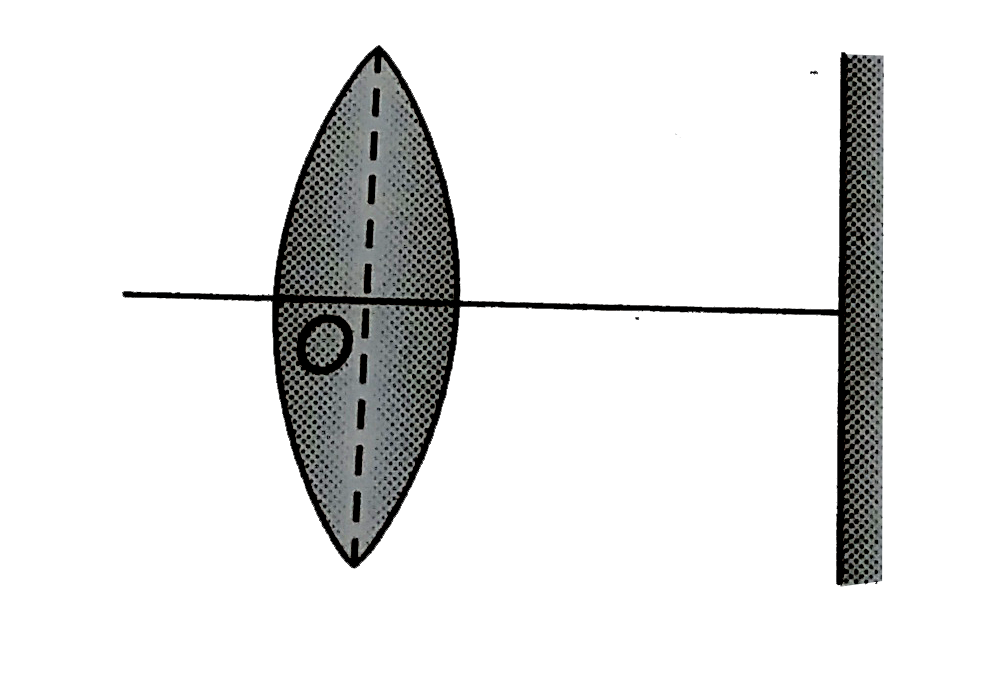How is a lens different from a mirror ?
A mirror has one reflecting surface . By reflection of light, it forms an image of the object placed in front of it. A mirror is not transparent . A lens has two surfaces that form an image by refraction of light. A lens is transparent.
Topper's Solved these Questions
- BOOK - NAVNEET PUBLICATION - MAHARASHTRA BOARDCHAPTER - LENSESEXERCISE - Give scientific reasons16videos
LENSES
- BOOK - NAVNEET PUBLICATION - MAHARASHTRA BOARDCHAPTER - LENSESEXERCISE - Distinguish between6videos
LENSES
- BOOK - NAVNEET PUBLICATION - MAHARASHTRA BOARDCHAPTER - LENSESEXERCISE - Answer the following questions in one sentence each :10videos
LENSES
- BOOK - NAVNEET PUBLICATION - MAHARASHTRA BOARDCHAPTER - LAWS, RULES, UNITS AND DEFINITIONS EXERCISE - Carbon Compounds18videos
LAWS, RULES, UNITS AND DEFINITIONS
- BOOK - NAVNEET PUBLICATION - MAHARASHTRA BOARDCHAPTER - MAKING CONCEPT DIAGRAMS EXERCISE - Cell Biology and Biotechnology2videos
MAKING CONCEPT DIAGRAMS
Similar Questions
Write the formula for a lens connnecting image distance (v), object distance (u) and the focal length (f). How does the lens formula differ from the mirror formula?
View SolutionHow is the refraction of light ray from a plane mirror different from the refraction of light ray as it enters a block of glass?
View Solution
Knowledge Check
- Question 1 - Select One

The distance between a convex lens and a plane mirror is 10 cm. The parallel rays incident on the convex lens after reflection from the mirror forms image at the potical centre of the lens. Focal length of lens will beA10 cm convex and 15 cm concaveB20 cmC30 cmDcannot be determined - Question 2 - Select One
A thin convex lens of focal length 30cm is placed in front of a plane mirror. An object is placed at a distance x from the lens (not in between lens and mirror ) so that its final image coincides with itself. Then, the value of x is
A15cmB30cmC60cmDInsufficient data - Question 3 - Select One
A convex lens of focal length 15 cm is placed in front of a plane mirror at a distance 25 cm from the mirror. Where on the optical axis and from the centre of the lens should a small object be placed such that the final image coincides with the object ?
A15 cm and on the opposite side of the mirrorB15 cm and between the mirror and the lensC7.5 cm and on the opposite side of the mirrorD7.5 cm and between the mirror and the lens
The distance between a convex lens and a plane mirror is 15 cm. The parallel rays incident on the convex lens, after reflection from the mirror, form image at the optical centre of the lens. Draw the ray-diagram and find out the focal length of the lens.
View SolutionA convex lens of focal length 15 cm and a concave mirror of focal length 30 cm are kept with their optic axis PQ and RS parallel but separated in vertical directiion by 0.6 cm as shown . The distance between the lens and mirror is 30 cm . An upright object AB of height 1.2 cm is placed on the optic axis PQ of the lens at a distance of 20 cm from the lens . if A'B' is the image after refraction from the lens and the reflectiion from the mirror , find the distance of A'B' from the pole of the mirror and obtain its magnification . Also locate positions of A' and B' with respect to the optic axis RS.
_E01_247_Q01.png) View Solution
View SolutionA convex lens of focal length 15 cm and a concave mirror of focal length 30 cm are kept with their optic axis PQ and RS parallel but separated in vertical directiion by 0.6 cm as shown . The distance between the lens and mirror is 30 cm . An upright object AB of height 1.2 cm is placed on the optic axis PQ of the lens at a distance of 20 cm from the lens . if A'B' is the image after refraction from the lens and the reflectiion from the mirror , find the distance of A'B' from the pole of the mirror and obtain its magnification . Also locate positions of A' and B' with respect to the optic axis RS.
_E01_247_Q01.png) View Solution
View SolutionA convex lens of focal length 15 cm and a concave mirror of focal length 30 cm are kept with their optic axis PQ and RS parallel but separated in vertical directiion by 0.6 cm as shown . The distance between the lens and mirror is 30 cm . An upright object AB of height 1.2 cm is placed on the optic axis PQ of the lens at a distance of 20 cm from the lens . if A'B' is the image after refraction from the lens and the reflectiion from the mirror , find the distance of A'B' from the pole of the mirror and obtain its magnification . Also locate positions of A' and B' with respect to the optic axis RS.
_E01_247_Q01.png) View Solution
View SolutionA concave lens focal length 10 cm is placed on the axis of concave mirror of 10 cm radius at a distance of 5 cm from the mirror. An object is placed so that the light coming from it first passes through the lens, the gets reflected from the mirror, again passes through the lens to form an inverted image coincident with the object itself. Determine the position of the object.
View Solution

